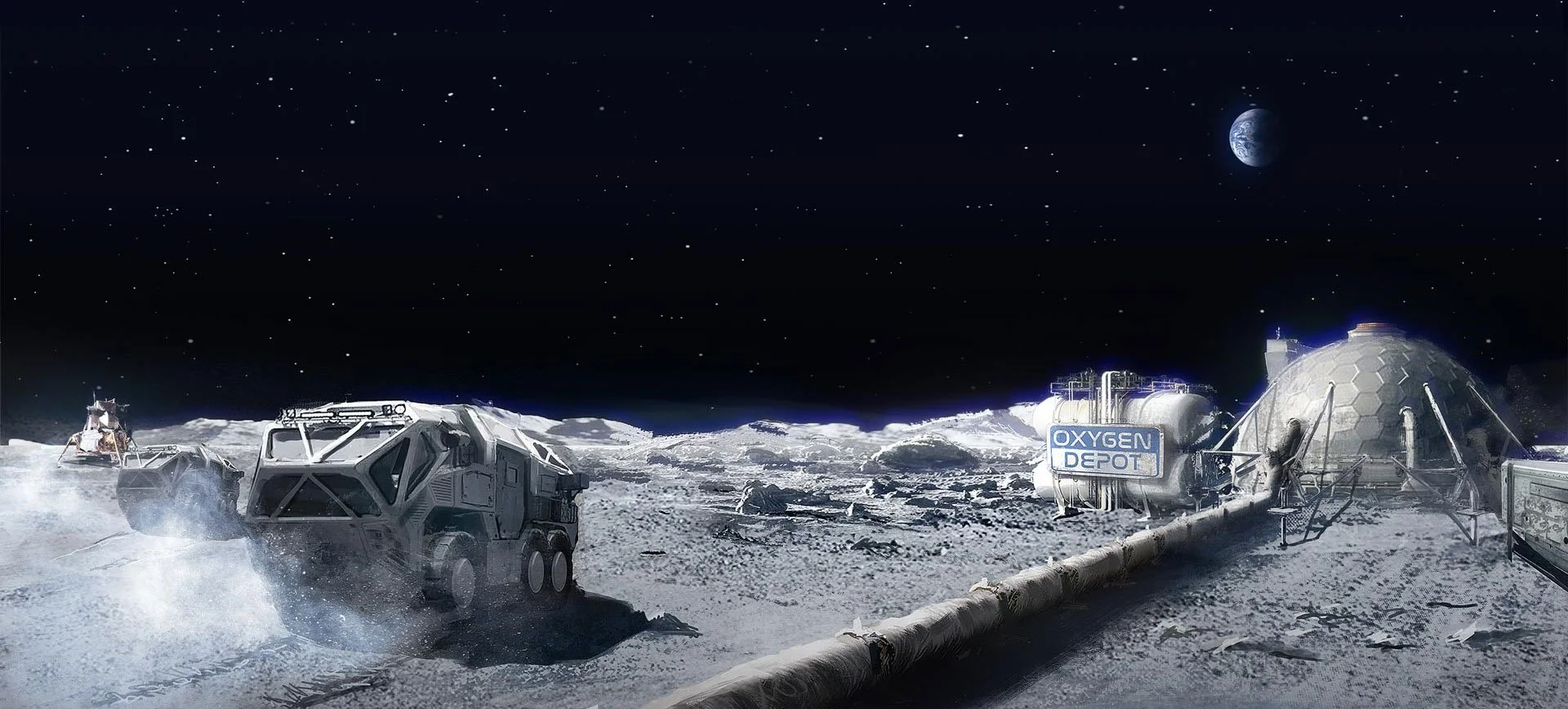Lunar Propellant at Scale: The Case for LLOX
Companies like HELIOS are developing technologies to extract oxygen from martian and lunar soil, providing breathable air and propellant for space missions.
Credit: HELIOS
Why polar oxygen plants and L1 depots could underpin the lunar economy
A lunar economy only works if transport is predictable and affordable. The most practical lever is oxygen produced in-situ—split from polar ice or extracted from oxides in the regolith—and moved as propellant to where vehicles need it. This is known as lunar-derived liquid oxygen or LLOX. Oxygen is the heavy half of many propellant blends; producing it locally changes mission maths across landers, tugs and station logistics. The idea is straight from the startup playbook referenced by Christensen: push capability to the edge, iterate quickly, and let reusability compound learning. In cislunar space, that translates to oxygen plants near polar resources and depots positioned at energy-efficient nodes such as Earth–Moon L1.
Commercially, this reframes “refuel” as a service. Rather than bespoke barter for tankers and valves, operators want contracted kilograms delivered within boil-off tolerances and windows that match launch manifests. A depot operator becomes a scheduler as much as a supplier: they balance deliveries from polar plants, transient storage, and outbound transfers to customers ranging from national programmes to private stations.
The buyer mix is diverse—surface mission planners, cargo landers, logistics tugs, and, later, manufacturers who run thermal cycles or process loops that benefit from oxygen streams. Packaging follows the cadence of space operations: capacity blocks reserved ahead of campaigns, premiums for priority slots, and performance credits tied to delivery temperature and purity. Distribution naturally runs through lander providers and integrators; credibility grows with demonstrations that synchronise extraction, transport and transfer across multiple cycles. The strategic upside is network effect: every additional customer improves utilisation, smooths demand, and lowers per-unit risk, reinforcing the depot as shared infrastructure rather than a single-mission asset.
